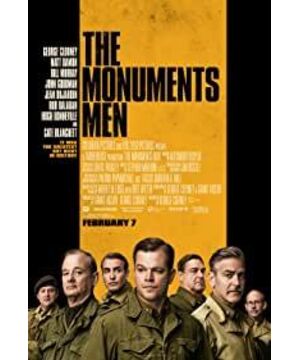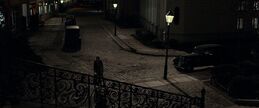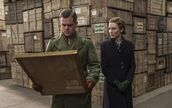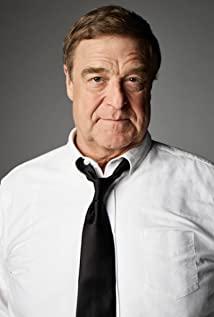Allied Raiders is a more documentary-like film. It is said to be the result of George Clooney reading a related historical biography while waiting for his plane. It narrates the cultural relics protection actions of a group of seven artists in the United States, "Monuments Guard", in Germany, France, Belgium and other places at the end of World War II. In total, about 5 million rare art treasures and books have been searched and rescued in this operation and returned to their original owners. For these works of art, some artists paid the price of their lives, and some masterpieces by masters were permanently destroyed by the fire of war and Hitler's own paranoid artistic conception. It is estimated that it is related to the original work, and the film pays more attention to the process of "finding". Since many actions are carried out separately, the clues are scattered. At the same time, there is no clear protagonist, and the personal characteristics of the monument guard are less portrayed. Instead, Cate Blanchett Played the role of a partner in the Paris Tennis Hall Museum (seems to have met Aunt Kate a lot lately) and a secondary role like the Nazi art thief Stell (actually an art dealer, probably leaning towards the Nazis) has written a lot of back and forth. . So overall it wasn't a success as a movie. However, there are also some highlights of the bridge, such as the family Christmas greetings from the military camp, such as Matt Damon and Kate's relationship from distrust to the responsibility to save the artwork, during which secretly breeds and is terminated by the high. However, it seems to have nothing to do with the theme of the film, so the overall look is scattered. Some of the hardships in the treasure hunt process may be because the characters are all artists, and there is really no bright spot to dig out on the battlefield, so the pictures are scribbled and inexplicable. Anyway, it is enough to know that they are dedicated to artworks. Let’s go back and talk about why you can still watch it. While the film is full of didactics and the obvious intent of gilding Americans, questions and discussions about the value of the artwork permeate throughout. No matter what the audience thinks, the film's answer is obvious, that it is worth sacrificing your life for the great work of art and human cultural heritage. The argument is that a generation, a group of people, can be wiped out in their entirety, but life will still persist and thrive, rejuvenated. However, if the history of these people is wiped out and their culture is stifled, then these people really never existed and will not last. I don't know how to evaluate this argument and conclusion. It's just that after hearing about it, and then looking at the famous paintings and masterpieces displayed in the movies, I somehow feel that they are not just art. Those richly colored canvases are not only soaked with oil paint, but soaked with history and blood, those vivid paintings. Sculpture works are no longer stubborn stones and lines, but the real soul is entrenched in them. In this way, even if you know the history that has happened, when you see one by one deep underground 1 In the mines above 000 feet, when a large number of works of art are discovered and protected, I will still be sincerely happy, and when I see the works of Picasso and Raphael being burned, I will still feel distressed. Speaking of which, by sacrificing for the artwork, oneself has become a part of the artwork. As long as it continues to be passed down, the life and legend of the monument guards will continue. The so-called civilization is just such sacrifice and accumulation. From this point of view, to sacrifice one's life for a work of art is considered a death well deserved for an artist. Just as a soldier dies on the battlefield, it is like a cadre Mo Xie who feeds his sword with his body. Finally, there is a good clip. In a mine with hidden works of art, the Monuments Guards discovered 100 tons of gold, equivalent to the national reserves of Germany. The media attracted attention, and the military attached great importance to it, thinking it was a fatal blow to Hitler. In contrast, the discovery of hundreds of thousands of cultural relics and works of art is low-key and silent, and the real value is unnoticed. At the beginning of the film, it was the bombing of the Allied forces that led to the destruction of a large number of cultural relics that triggered the task of heritage protection. At the end of the film, President Roosevelt asked: Is it worth it for a piece of art? Quite ironic.
View more about
The Monuments Men reviews










